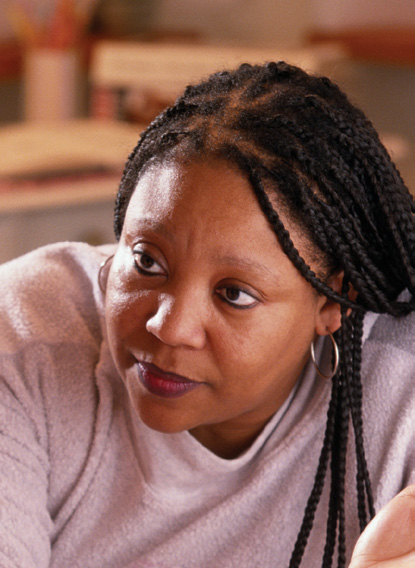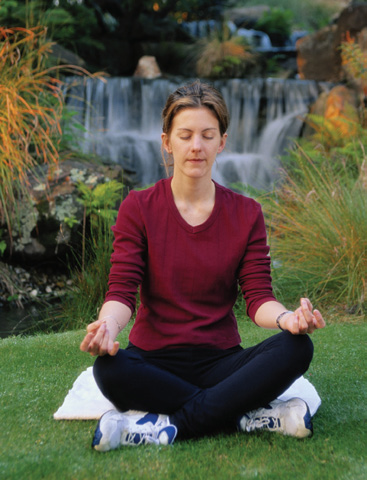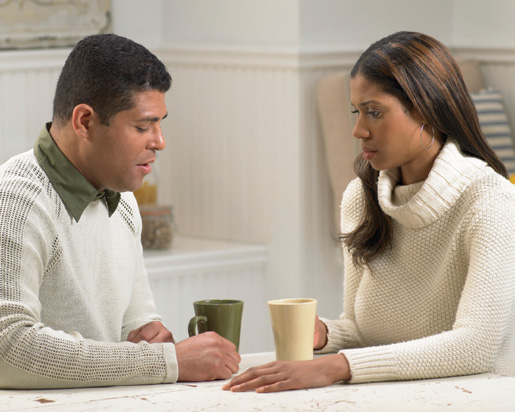■
■ What are the side effects? How can I prevent them? __________________________
________________________________________________________________________
________________________________________________________________________
________________________________________________________________________
■
■ What should I call you about right away? ____________________________________
________________________________________________________________________
________________________________________________________________________
________________________________________________________________________
18

Other ways to relieve pain
Medicine doesn’t always relieve pain in some people. In these cases, doctors use other treatments to reduce pain:
■
■ Radiation therapy. Different forms of radiation energy are used to shrink the tumor and reduce pain. Often one treatment is enough to help with the pain. But sometimes several treatments are needed.
■
■ Neurosurgery. A surgeon cuts the nerves that carry pain messages to your brain.
■■ Nerve blocks. Anesthesiologists inject pain medicine into or around the nerve or into the spine to relieve pain.
■
■ Surgery. A surgeon removes all or part of a tumor to relieve pain.
This is especially helpful when a tumor presses on nerves or other parts of the body.
■
■ Chemotherapy. Anticancer drugs are used to reduce the size of a tumor, which may help with the pain.
■■ Transcutaneous Electric Nerve Stimulation (TENS). TENS
uses a gentle electric current to relieve pain. The current comes from a small power pack that you can hold or attach to yourself.
Your Pharmacist
Your Pharmacist is an important member of your health care team.
He or she can answer many questions about your medicines, such as how to take them, or what side effects they have. It’s a pharmacist’s job to stay up-to-date and informed about cancer drugs.
If possible, try to use just one pharmacy. This way, all your prescriptions will be on file in one system. Some pharmacies even have systems that give warnings if newly ordered medicines could interact or interfere with others that someone is already taking.
19



C H A P T E R 6
Medicine Tolerance and Addiction
When treating cancer pain, addiction is rarely a problem.
Addiction is when people can’t control their seeking or craving for something.
They continue to take medicine or do something even when it causes them harm.
Often people are taking medicines when they do not have pain. They take it for psychological reasons, not physical. But people with cancer need strong medicine to help control their pain. Yet some people are so afraid of becoming addicted to pain medicine that they won’t take it. Family members may also worry that their loved ones will get addicted to pain medicine. Therefore, they sometimes encourage loved ones to “hold off” between doses But even though they may mean well, it’s best to take your medicine as prescribed.
People in pain get the most relief when they take their medicines on schedule. And don’t be afraid to ask for larger doses if you need them. As mentioned on page 13, developing a tolerance to pain medicine is common. But taking cancer pain medicine is not likely to cause addiction. If you’re not a drug addict, you won’t become one.
Even if you have had an addiction problem before, you still deserve good pain management. Talk with your doctor or nurse about your concerns.
“If you’re worried about
addiction, ask yourself one
question. If you didn’t have
this pain, would you want
this medicine? The answer
is usually no.” —Robin
20
Tolerance to pain medicine sometimes happens.
Some people think that they have to save stronger medicines for later. They’re afraid that their bodies will get used to the medicine and that it won’t work anymore. But medicine doesn’t stop working—it just doesn’t work as well as it once did. As you keep taking a medicine over time, you may need a change in your pain control plan to get the same amount of relief.
This is called tolerance. Tolerance is a common issue in cancer pain treatment.
Medicine tolerance is not the same as addiction.
As mentioned, medicine tolerance happens when your body gets used to the medicine you’re taking. Each person’s body is different. Many people don’t develop a tolerance to opioids. But if tolerance happens to you, don’t worry.
Under your doctor’s care, you can:
■
■ Increase your dose
■
■ Add a new kind of medicine
■
■ Change the kind of medicine that you’re taking for pain
The goal is to relieve your pain. Increasing the dose to overcome tolerance does not lead to addiction.
Taking pain medicine will not cause you to “get high.”
Most people do not “get high” or lose control when they take cancer pain medicines as prescribed by the doctor. Some pain medicines can cause you to feel sleepy when you first take them This feeling usually goes away within a few days. On occasion, people get dizzy or feel confused when they take pain medicines. Tell your doctor or nurse if this happens to you. Changing your dose or type of medicine can usually solve this problem.
21

C H A P T E R 7
Other Ways To Control Pain
Along with your pain medicine, your health care team may suggest you try other methods to control your pain. However, unlike pain medicine, some of these methods have not been tested in cancer pain studies. But they may help improve your quality of life by helping you with your pain, as well as stress, anxiety, and coping with cancer. Some of these methods are called complementary or integrative.
These treatments include everything from cold packs, massage, acupuncture, hypnosis, and imagery to biofeedback, meditation, and therapeutic touch. Once you learn how, you can do some of them by yourself. For others, you may have to see a specialist to receive these treatments. If you do, ask if they are licensed experts.
Acupuncture
Acupuncture is a form of Chinese medicine. It involves inserting very thin, metal needles into the skin at certain points of the body. (Applying pressure to these points with just the thumbs or fingertips is called acupressure.) The goal is to change the body’s energy flow so it can heal itself.
When receiving this treatment, you may have a slight ache, dull pain, tingling, or electrical-feeling sensation for a few seconds after the needles are inserted. Once the needles are in place, though, you shouldn’t feel any discomfort. They remain in place for 15 to 30 minutes. However, it may be more or less, depending on what the practitioner suggests.
Acupuncture has been shown to help with nausea and vomiting related to cancer treatment. And some studies have shown it may help with cancer pain. Before getting acupuncture, talk with your health care team to make sure it’s safe for your type of cancer. If it is, your health care team can suggest a licensed acupuncturist. Many hospitals and cancer centers have one on staff.
Biofeedback
Biofeedback uses machines to teach you how to control certain body functions, such as heart rate, breathing, and muscle tension. You probably never think of these body functions because they happen on their own. But learning how to control them may help you relax and cope with pain. Biofeedback is often used with other pain relief methods. If you’re interested in trying this method, you must see a licensed biofeedback technician.
22


Distraction
Distraction is simply turning
your focus to something other
than the pain. It may be used
alone to manage mild pain, or
used with medicines to help with
acute pain, such as pain related to
procedures or tests. Or you may
try it while waiting for your pain
medicine to start working.
More than likely, you’ve done this
method without realizing it. For example, watching television and listening to music are good ways to distract your mind. In fact, any activity that can focus your attention can be used for distraction. You can count, sing, or pray. You could try slow rhythmic breathing or repeat certain phrases over and over again, such as “I can cope.”
You could do certain activities that take your mind from the pain. Some of these may be crafts or hobbies, reading, going to a movie, or visiting friends.
Heat and Cold
Heat may relieve sore muscles, while cold may numb the pain. However, ask your doctor if it is safe to use either during treatment. Do not use them for more than 10
minutes at a time. And do not use heat or cold over any area where circulation is poor.
For cold, try plastic gel packs that remain soft even when frozen. You can find them in drug and medical-supply stores. Of course, you always can use ice cubes wrapped in a towel or frozen water in a paper cup.
For heat, you can use a heating pad. But you also can try gel packs heated in hot water, hot-water bottles, a hot, moist towel, and hot baths and showers. Be careful not to leave heat on too long to avoid burns.
Hypnosis
Hypnosis is a trance-like state of relaxed and focused attention. People describe it as a lot like the way they feel when they first wake up in the morning. Their eyes are closed, but they’re aware of what’s going on around them. In this relaxed state, people’s minds are usually more receptive or open to suggestion. As a result, hypnosis can be used to block the awareness of pain or to help you change the sensation of pain to a more pleasant one.
You’ll need to see a person who is trained in hypnosis, often a psychologist or psychiatrist. He or she may also be able to teach you how to place yourself in a trance-like state, by making positive suggestions to yourself.
23


Imagery
Imagery is like a daydream. You close your eyes and create images in your mind to help you relax, feel less anxious, and sleep. You daydream using all of your senses –
sight, touch, hearing, smell, and taste. For example, you may want to think of a place or activity that made you happy in the past. You could explore this scene, which could help reduce your pain both during and after you try it.
If you have to stay in bed or can’t leave the house, imagery may help. It may lessen the closed-in feelings you have after being indoors for a long time. See page 39 for an exercise on how to use imagery.
Massage
Massage may help reduce pain and anxiety. It may also help with fatigue and stress. It is pressing, rubbing, and kneading parts of the body with hands or special tools. For pain, a steady, circular motion near the pain site may work best. Massage may also help relieve tension and increase blood flow. Deep or intense pressure should not be used with cancer patients unless their healthcare team says it’s okay to do so.
Meditation
Meditation is a form of mind-body medicine used to help relax the body and quiet the mind. It may help with pain, as well as with worry, stress, or depression.
People who are meditating use certain techniques such as focusing attention on something, like a word or phrase, an object, or the breath. They may sit, lie down, walk, or be in any other position that makes them feel comfortable. A goal while meditating is to try to have an open attitude toward distracting thoughts or emotions.
When they occur, attention is gently brought back to breathing or the silent repeating of phrases.
“I began meditating as a way to help
relieve my pain and calm myself.
I can’t avoid medicine, but I feel like
I don’t have to take as much.” —
Anna
24
Relaxation
Relaxation reduces pain or keeps it from getting worse by getting rid of tension in your muscles. It may help you sleep and give you more energy. Relaxation may also reduce anxiety and help you cope with stress.
The most common methods of relaxation are:
■
■ Visual concentration. When you stare at an object.
■
■ Breathing and muscle tensing. This is breathing in and tensing the muscles, then breathing out while letting your muscles go. See page 40 for an exercise on how to use breathing and muscle tensing.
■■ Slow rhythmic breathing. To do this, you breathe slowly in and out while concentrating on an object. You can add imagery to slow rhythmic breathing or listen to music too. See page 40 for an exercise on how to use slow rhythmic breathing.
Sometimes, relaxation is hard if you’re in severe pain. You could try using some of the methods that are quick and easy. These may be rhythmic massage or breathing and muscle tensing. Some people use music or other types of art therapy to help them relax.
Sometimes breathing too deeply can cause shortness of breath. If this happens, take shallow breaths or breathe more slowly. Also, as you start to relax, you may fall asleep. If you don’t want to sleep, sit in a hard chair or set a timer or alarm before you start the exercise.
Other Methods
Here are some other ways people have tried to find relief from cancer pain.
■
■ Physical Therapy. Exercises or methods used to help restore strength, increase movement to muscles, and relieve pain.
■■ Reiki. A form of energy medicine in which the provider places his or her hands on or near the patient. The intent is to transmit what is believed to be a life force energy called qi (or chi).
■
■ Tai Chi. A mind-body practice that is a series of slow, gentle movements with a focus on breathing and concentration. The thought is that it helps what is believed to be a life force energy (called qi) flow through the body.
■
■ Yoga. Systems of stretches and poses with special focus given to breathing. It is meant to calm the nervous system and balance the body, mind, and spirit. There are different types of yoga, so ask about which ones would be best for you.
Make sure that you see a licensed expert when trying physical therapy, massage, hypnosis, or acupuncture.
25
To learn more about complementary treatments for pain:
■
■ Talk with your doctor, nurse, or oncology social worker.
■
■ See the NCI booklet Thinking About Complementary & Alternative Medicine: A Guide for People With Cancer. See page 34 on how to order.
■■ Contact the National Center for Complementary and Alternative Medicine at 1-888-644-6226 or online at http://nccam.nih.gov.
■
■ See the web site for the NCI Office of Cancer Complementary and Alternative Medicine at http://www.cancer.gov/cam.
Remember: Always talk with your doctor before using any complementary pain treatments. Some may interfere with your cancer treatment.
26



C H A P T E R 8
Your Feelings and Pain
“At first I wasn’t able to do the things
I used to do. I couldn’t mow my lawn
or work in my garden. It was very
frustrating.” —Juan
Having pain and cancer affects every part of your life.
It can affect not only your body, but your thoughts and feelings as well. Whether you have a lot of pain or a little, if it’s constant, you may feel like you aren’t able to focus on anything else. It may keep you from doing things and seeing people that you normally do. This can be upsetting and may feel like a cycle that never seems to end.
Sometimes things that people used to take for granted aren’t as easy anymore. These may include cooking, getting dressed, or just moving around. Some people can’t work because of the pain or have to cut back on their hours. They may worry about money.
Limits on work and everyday life may also make people less social, wanting to see others less often.
Research shows that people in pain may feel sad or anxious and may get depressed more often. At other times they may feel irritable, or angry and frustrated. And they can feel lonely, even if they have others around them.
A common result of having cancer and being in pain is fear. For many, pain and fear together feel like suffering. People get upset worrying about the future. They focus their thoughts on things that may or may not happen. You may feel fear about many things, such as fear of:
■
■ The cancer getting worse
■
■ The pain being too much to handle
■
■ Your job or daily tasks becoming too hard to do
■
■ Not being able to attend special trips or events
■
■ Loss of control
This rollercoaster of feelings often makes people look for the meaning that cancer and pain have in their life. Some question why this could happen to them. They wonder what they did to deserve it. Others may turn to religion or explore their spirituality more, asking for guidance and strength.
27


Don’t lose hope.
If you have feelings like these, know that you’re not alone. Many people with cancer pain have had these kinds of feelings. Having negative thoughts is normal. And some people have positive thoughts, too, finding benefits in facing cancer. But if your negative thoughts overwhelm you, don’t ignore your feelings. Help is there for you if you’re distressed or unsure about your future.
Finding support
There are many people who can help you. You can talk with oncology social workers, health psychologists, or other mental health experts at your hospital or clinic. Your health care team can help you find a counselor who is trained to help people with long-term illnesses. These people can help you talk about what you are going through and find answers to your concerns. They may suggest medicine that will help you feel better if you need it.
Many people say that they regain a sense of control and well-being after talking with people in their spiritual or religious community. A leader from one of these groups may be able to offer support, too. Many are trained to help people cope with illness.
Also, many hospitals have a staff chaplain who can counsel people of all faiths.
You can also talk with friends or others in your community. Some join a support group. Cancer support groups are made up of people who share their feelings about coping with cancer. They can meet in person, by phone, or over the Internet. They may help you gain new insights and ideas on how to cope. To find a support group for you, talk with your doctor, nurse, or oncology social worker.
“I can’t help feeling
frustrated with all that’s
going on in my life. Between
my cancer treatments and
the pain, I get upset and
angry. Sometimes I really
need someone to talk to—
someone who understands
what I’m going through.” —
Carlos
28
How your pain affects your loved ones
Chronic or severe pain affects everyone who loves and takes care of you. It can be hard for family members and friends to watch someone close to them be in pain.
Like you, your loved ones may feel angry, anxious, and lonely. They may feel helpless because they can’t make you feel better. They may even feel guilty that you have pain while they don’t. Or they may feel loss, because your pain keeps you from doing things you like to do.
It’s natural for family members and friends to have these emotions. It may help if everyone understands that these emotions exist and that no one needs to face them alone.
Let your family members know it’s okay for them to get help. Like you, they can talk to a counselor or join a support group. Encourage them to ask the oncology social worker about the options that are available for them.
Also, they can read the NCI booklets for caregivers listed on the inside front cover of this booklet.
Talking with family members
You may want to let family members and friends know how you’re feeling. For some, this can be hard or awkward. Some people say that they want to avoid upsetting those closest to them. Others say that they don’t want to seem negative. But open and honest communication can help everyone. Letting others know about your pain may help them understand what you are going through. They can then look for ways to help you. Your loved ones may also feel better knowing that they’re helping to make you feel more comfortable.
Family problems before your cancer
Any problems your family had before you got cancer are likely to be more intense now.
Or maybe your family just doesn’t communicate very well. If this is the case, you can ask a social worker to set up a family meeting for you. During these meetings, the doctor can explain treatment goals and issues. And you and your family members can state your wishes for care. These meetings can also give everyone a chance to express their feelings in the open. Remember, there are many people you can turn to at this time.
For more about coping with your feelings, see the NCI brochure, Taking Time: Support for
People With Cancer. See page 34 on how to order or download.
29



C H A P T E R 9
Financial Issues
“My doctor told me about a pain control
technique that he thought would help me.
I was a little worried about how I would pay
for it. It took one phone call to my insurance
company, and my questions were answered.”
—Terry
When you’re in pain, the last thing you want to think
about is paying for your medicine. Yet money worries
have stopped many people from getting the pain
treatment they need. Talk with your oncology social
worker if you have questions. He or she should be able to direct you to resources in your area. Here are some general tips:
Insurance
When dealing with health insurance, you might want to:
■
■ Call your insurance company and find out what treatments are covered.
Sometimes insurance companies pay for only certain types of medicines. If the medicine you need isn’t covered, your doctor may need to write a special appeal letter. Or your doctor may need to prescribe a different treatment.
■
■ Ask if your insurance company can give you a case manager to help you with your coverage.
■
■ Check to make sure that your plan will cover any specialists your doctor refers you to. If it does not, check with your insurance company to see which doctors are included in your plan. Ask your doctor to refer you to someone on your plan’s list.
■
■ Find out whether you have to pay copayments up front and how much they cost.
■
■ Find out how you should pay your balance. For example, do you file a claim?
Does the insurance company pay first? Or do you pay and get reimbursed?
■
■ Tell the insurance company if you believe you’ve received an incorrect bill. You should also tell your doctor or the hospital or clinic that sent the bill. Don’t be afraid to ask questions.
30
Government health insurance
Medicare
Medicare is health insurance for people age 65 or older. However, people under 65
who are on kidney dialysis or have certain disabilities may also qualify.
Medicare Part B only pays for outpatient medicine given by a pump or by vein.
It doesn’t pay for pills, patches, or liquids.
Medicare Part D is a benefit that covers outpatient prescription medicines. It comes from private insurance plans that have a contract with Medicare. These plans vary in what they cost and the medicines they cover. Find out which medicin




















